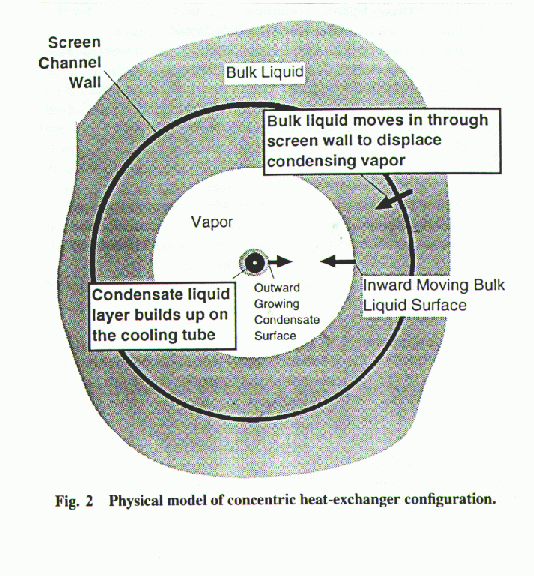Abstract
This work addresses the problem of filling screen-channel liquid acquisition devices in very low gravity. The concept of using a thermodynamic vent system to promote Clapeyron pumping and condensation is proposed in two configurations, a triangular apex-mounted heat exchanger and a concentric cylinder heat exchanger. The performance of the concept in low gravity is then evaluated by analysis. By approximating the liquid surfaces as flat and parallel, the triangular configuration is related to the cylindrical configuration. Results of a numerical solution to the one-dimensional cylindrical heat-transfer problem show that a quasi-steady analytical solution suffices for the Jakob numbers of interest. For an initially-empty channel of 38-cm-squared cross-sectional area with a 10:1 ratio of channel height to heat exchanger radius, and 4-K Joule-Thomson expansion, complete fill occurs in 30 min. The concept was then proven by testing performed in lg with Freon-114 at Jakob numbers similar to that in a hydrogen, on-orbit servicing environment. A screen-channel test article was successfully filled against gravity. This reliable method of filling screen channels enables on-orbit resupply of space-based systems that must deliver liquid in low gravity, such as a fuel depot.
Publications
- E. DiStefano, E. C. Cady, and R. H. Rangel, “A Method of Filling Screen Liquid Acquisition Devices in Low Gravity,” Journal of Spacecraft and Rockets, 31, 1099-1106, 1994.
